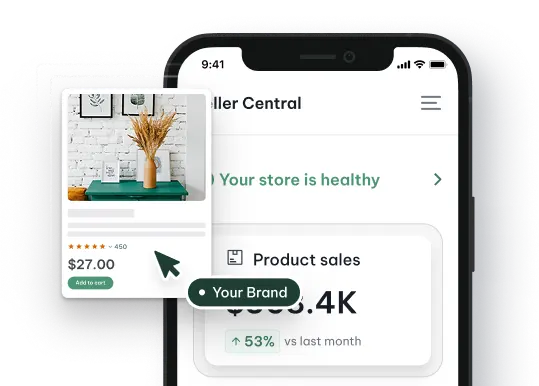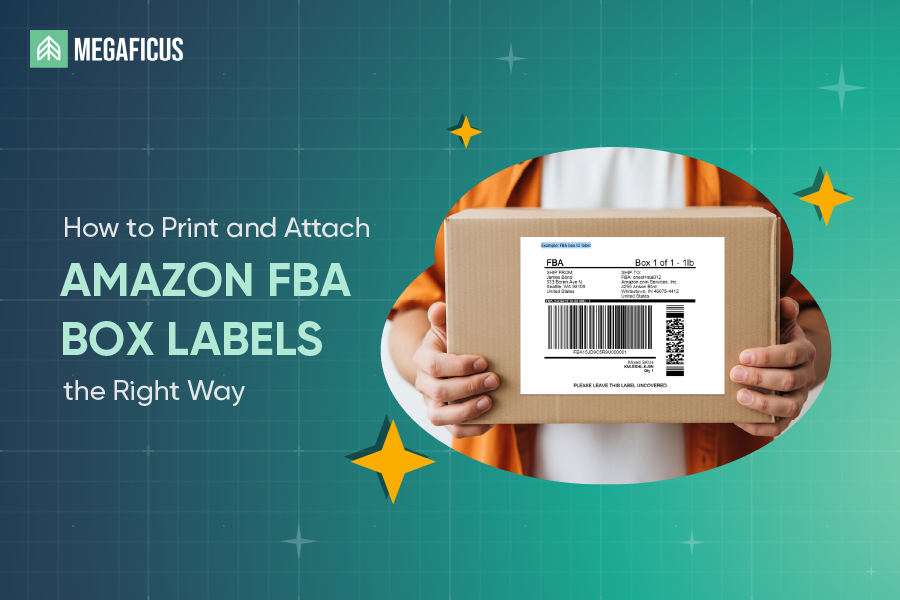What is ACOS Amazon Advertising? Why does it matter for your Amazon PPC campaigns? Let Megaficus guide you through everything you need to know about ACOS, from how to calculate it to the factors that affect it, and show you how to optimize your ads for better results.
Quick Summary:
- What is ACOS in Amazon Advertising? A metric that shows the percentage of ad spend compared to the revenue generated from those ads, used to evaluate campaign efficiency and profitability.
- How to calculate ACOS: ACOS = (Ad Spend ÷ Ad Revenue) × 100; lower values indicate better ad efficiency.
- Good ACOS benchmark: Typically ranges from 25% to 35%, with under 25% considered low (good) and above 35% considered high; ideal targets vary based on profit margins and business goals.
- Factors affecting ACOS: Product pricing, bidding strategy, keyword relevance, competition, and product lifecycle stage.
- How to optimize and lower ACOS: Refine keywords and bids, improve product listings, use negative keywords, leverage data insights, and implement ad scheduling for peak times.
What is ACOS Amazon Advertising and How to Calculate It Correctly?
ACOS (Advertising Cost of Sales) on Amazon is a metric used to evaluate the efficiency of an advertising campaign. It represents the percentage ratio between ad spend and the revenue generated from those ads. In Amazon PPC, ACOS is used to track advertising costs and compare them with the sales attributed to the campaign.
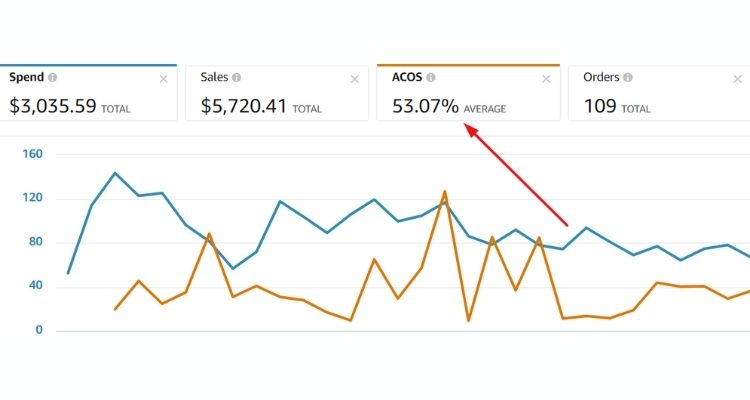
The formula to calculate ACOS is straightforward:
ACOS = (Ad Spend ÷ Ad Revenue) × 100
For example, if you spend $100 on Amazon Sponsored Ads and generate $200 in revenue, your ACOS would be 50%. In other words, you spent $0.50 to earn every $1 in sales from that campaign.
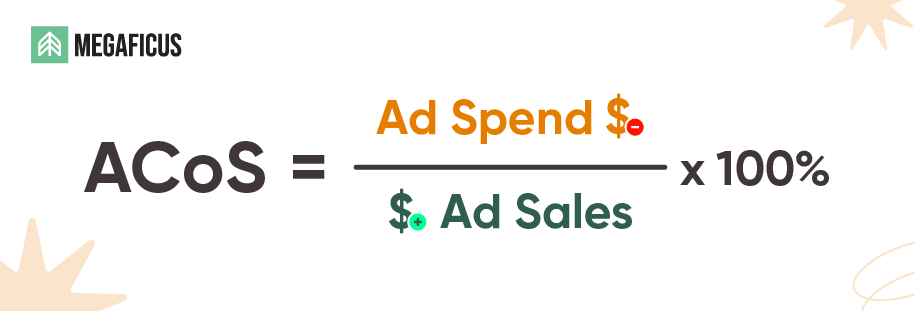
Try to calculate ACOS here:
Why ACOS Is Important in Amazon Advertising?
ACOS on Amazon is a critical metric for measuring the profitability and efficiency of your PPC campaigns. It allows you to assess how well your ads are performing and make informed decisions to improve results and increase sales.
Regularly reviewing your ACOS is essential for several reasons:
- It helps you determine whether your advertising campaigns are generating profit.
- It enables you to fine-tune your ad strategy to enhance performance and cost-effectiveness.
As Amazon seller fees continue to rise, maintaining healthy profit margins has become more challenging for brands. By monitoring your ACOS closely, you can ensure your ads drive sales while remaining profitable.
Key Factors That Influence Your ACOS
Determining your Amazon Advertising Cost of Sales is a simple process. Below, we’ve listed several elements that can influence your ACOS on Amazon:
- Product Pricing: Pricing your item significantly higher than similar listings can discourage potential buyers. This often results in fewer sales and a higher ACOS.
- Bidding Strategy: Setting overly high bids on PPC keywords can increase ad costs without generating proportional sales, pushing your ACOS upward. Conversely, bidding too low may cause your ads to lose visibility, which can also harm conversion rates.
- Keyword Relevance: Using keywords that are not closely related to your product may attract an audience with little interest in buying, leading to low conversions and increased ACOS.
- Competition: In highly competitive categories, you may need to invest more in PPC campaigns to stand out, which can elevate ACOS.
- Product Lifecycle Stage: New products typically start with a higher ACOS due to the initial investment needed for visibility. Established products, with accumulated reviews and customer trust, often enjoy a lower ACOS.
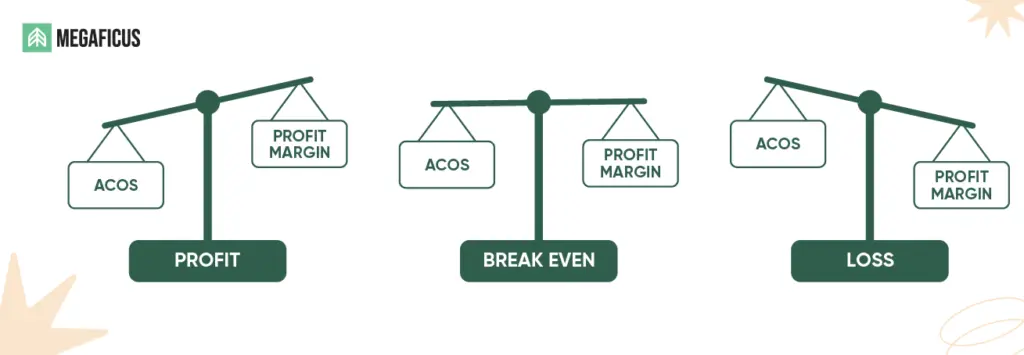
What Is the Typical ACOS for Different Amazon Product Categories?
Below is a summary of typical ACOS ranges for different product types and business phases, helping you set realistic advertising goals based on your margin and growth stage:
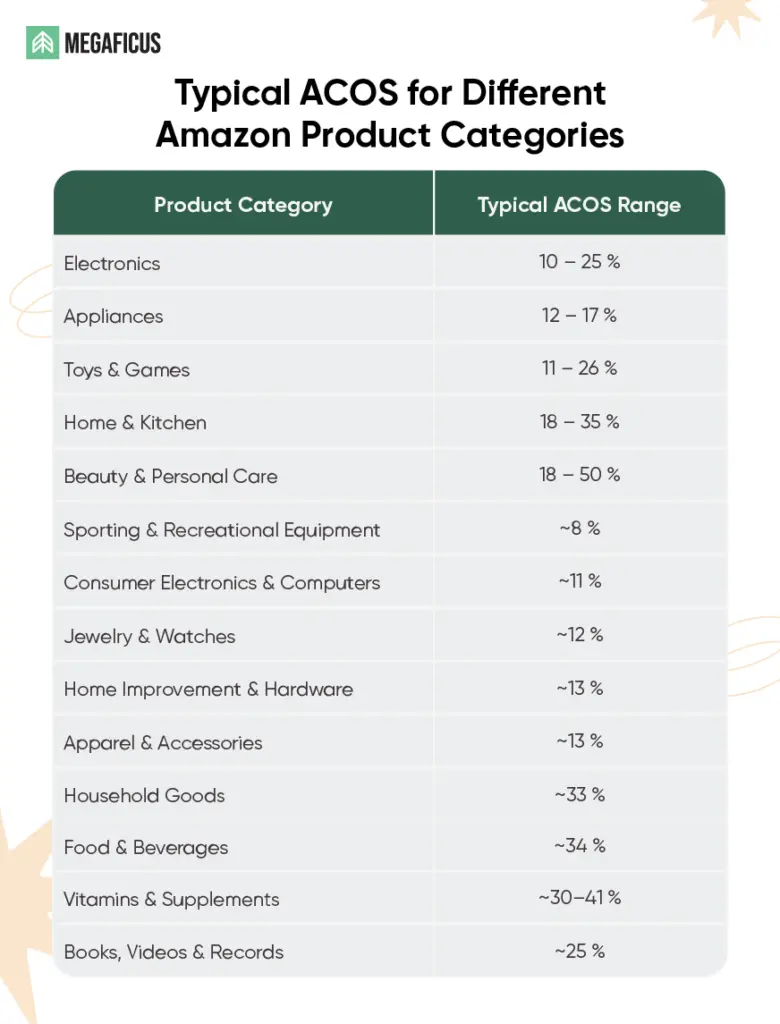
What Is A Good ACOS?
There is no single “good” or “bad” ACOS that applies to every seller. The ideal ACOS on Amazon depends on factors such as the product you sell, your industry, the type of ads you run, and the specifics of your campaign.
That said, many Amazon sellers aim for a target ACOS between 25% and 35%. In most industries, an ACOS under 25% is often viewed as low, while anything above 35% is considered high. However, the true value of your ACOS comes from placing it in the right context.
To evaluate your ACOS accurately, start by comparing it to other sellers in your country, industry, and product sub-category. Also, make sure the ad formats are the same so the comparison is fair. Then, align your ACOS expectations with your Amazon PPC goals.
While lower ACOS generally indicates better efficiency, there are situations where aiming for a higher ACOS makes sense. This can happen when you are:
- Launching a new product
- Building brand awareness
- Trying to win the Buy Box
- Competing in a highly competitive niche
- Selling off slow-moving products
How to Set Your ACOS Goals?
Determining your ideal ACOS starts with understanding how much you’re willing to invest in advertising. You can do this in three steps:
1. Identify Your Profit Margin
Your profit margin should include production costs, Amazon fees, and shipping costs. Calculate it using this formular:
Profit Margin = (Product Price – Production Costs – Amazon Fees – Shipping Costs) ÷ Product Price × 100
For example, if your product sells for $150, costs $40 to produce, incurs $20 in Amazon fees, and has $30 in shipping costs, the profit calculation would be $60, and the profit margin before advertising would be 40%.
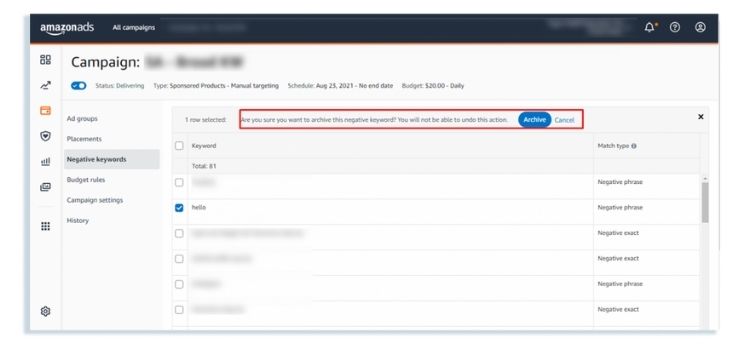
2. Calculate Break-Even ACOS
Your break-even ACOS is the point where advertising costs exactly match the profit margin, meaning you neither gain nor lose money. If your profit margin is 40%, then an ACOS of 40% would be your break-even. A higher ACOS would mean a loss, while a lower one would mean a profit.
Tip: Break-even ACOS can be calculated for individual products or for grouped products with the same profit margin.
3. Set Your Target ACOS
Your target ACOS is the percentage that allows you to meet your desired profit margin after advertising costs.
For example, if your gross profit margin before ads is 40% and you want to keep a 10% profit margin after ads, your target ACOS would be 30% (40% – 10%). This means you need to keep your advertising costs at or below 30% of your sales to maintain your desired profit.
How To Optimize And Lower Your ACOS On Amazon
Once you’ve determined your ideal ACOS target, you can begin optimizing by applying the following strategies
1. Optimize Your Ad Keywords
Choosing the wrong keywords can reduce impressions, hurt conversions, and ultimately waste your ad spend. To prevent this, set up negative keywords to filter out irrelevant search terms.
We recommend you use search term reports in Amazon Seller Central to find top-performing keywords. Since keyword targeting is central to running Sponsored Ads effectively, you may also consider partnering with an experienced advertising agency to make the most of your ad budget.
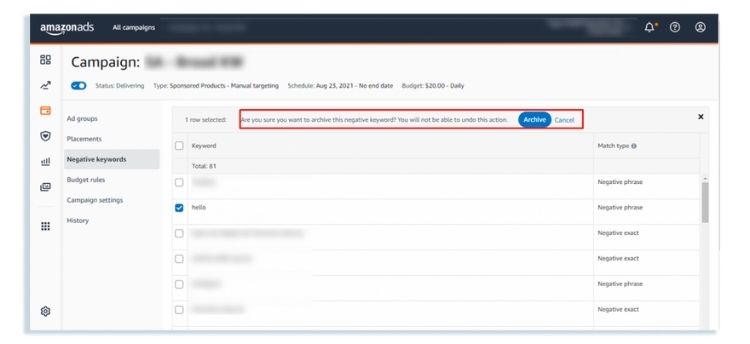
2. Optimize Product Listings
A poorly written or low-quality product listing will struggle to generate sales, no matter how much you spend on ads. To lower your ACOS, focus on creating trustworthy and persuasive listings.
Also, keep in mind that shoppers can’t physically touch or test your product, so building credibility is even more important than simply optimizing for SEO. Ways to enhance your product listings include:
- Using high-resolution images and videos
- Leveraging customer reviews as social proof
3. Optimize Your Bids
Bidding requires careful monitoring to balance costs. To improve ACOS, raise bids on high-performing keywords while lowering or pausing those with low conversions. Also, align inventory planning with bidding to ensure enough stock, sustain sales momentum, and keep ACOS low.
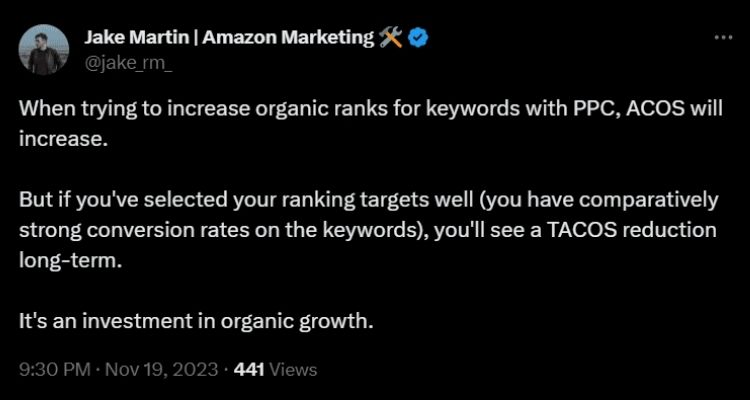
4. Use Different Keyword Match Types
Adjusting keyword match types can help refine your targeting. For example:
- Exact match works for very specific terms like “wireless noise-canceling headphones”.
- Phrase match targets closely related searches like “wireless headphones for running”.
- Broad match captures a wider range of relevant queries like “Bluetooth audio devices”.
5. Leverage Amazon’s Automatic Campaign Insights
Review the data from Amazon’s automatic campaigns regularly. Pay attention to metrics like click-through rate (CTR), conversion rate, and cost per click (CPC) over the past 60 days. Then, allocate more budget to high-performing keywords, and identify underperforming elements that should be optimized or removed altogether.
For example, if a keyword like “organic dog food” shows a high Amazon CTR of 8% and a conversion rate of 5%, allocate more budget to it. Meanwhile, pause keywords with a low conversion rate below 1% or a high CPC above $1.50.
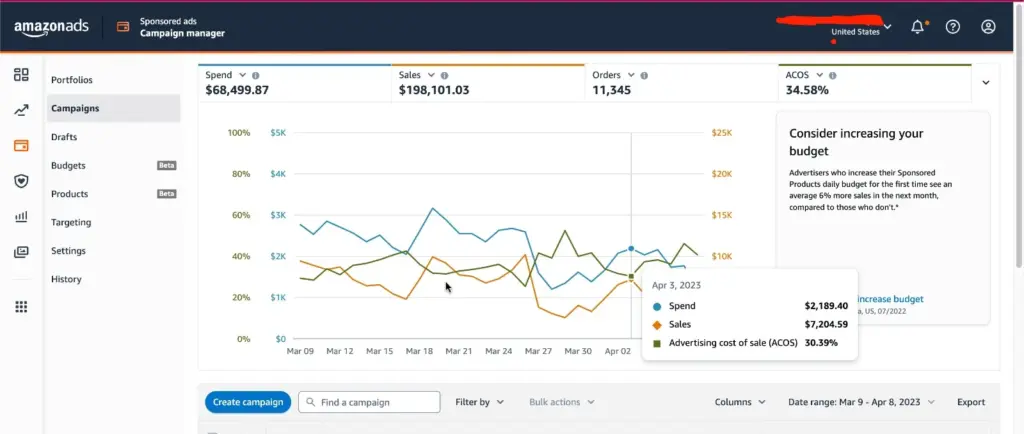
>>> Read more: Top 20 Amazon PPC Automation Tools to Boost Sales in 2025
6. Implement Dayparting (Ad Scheduling)
To use this strategy effectively, analyze your Amazon PPC data to find peak performance hours. Then, focus your ad budget during those times to boost visibility and conversions while cutting spend during slow periods.
For example, if ads perform best from 6 PM to 10 PM, allocate more budget then and reduce bids in early mornings.
Comparing ACOS vs. Other Amazon Advertising Metrics
When evaluating the effectiveness of your Amazon advertising campaigns, it’s important to understand how ACOS compares to other key metrics like ROAS and TACOS. The table below outlines the differences so you can choose the right metric for your goals:
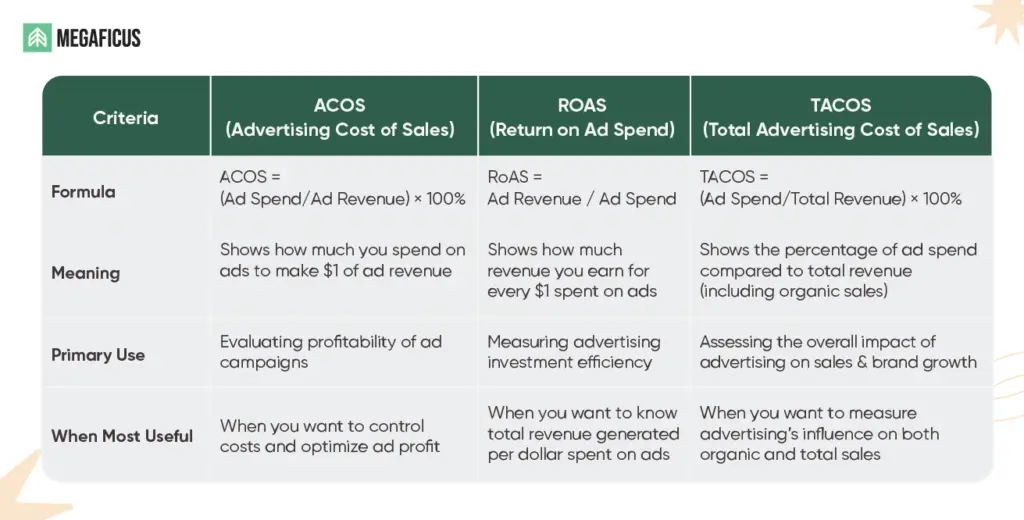
To help you choose the right metric for your goals, it is important to consider the following:
- Use ACOS to track how much you spend to generate ad revenue and manage costs.
- Select ROAS when you want to measure revenue earned per ad dollar spent.
- Use TACOS to evaluate the overall impact of advertising on your total sales, including organic revenue.
FAQs about ACOS Amazon Advertising
It depends largely on your unique business objectives. A good ACOS typically ranges from 25–35%, but some sellers in less competitive niches may target 15–30%.
Yes, 100% ACOS can be acceptable short-term for goals like product launches or brand awareness. However, it’s not sustainable for long-term profit.
Whether an ACOS is profitable depends largely on your product’s profit margin. To keep your campaigns profitable, your ACOS needs to stay below that margin. For instance, if your profit margin is 30%, targeting an ACOS under 30% will help ensure your Amazon FBA business remains financially successful overall.
To determine your ACOS on Amazon, you can either find it directly in your Campaign Manager dashboard or calculate it yourself using the formula: ACOS = (Ad Spend ÷ Ad Revenue) × 100.
According to several Amazon experts, the typical average for ACOS on Amazon hovers around 30%. Nevertheless, this figure serves only as a general benchmark since the optimal ACOS can differ widely depending on factors such as the product category, profit margins, and specific advertising objectives.
Wrap Up
We hope this article has given you valuable insights into ACOS Amazon Advertising. While Amazon PPC will continue to evolve in the coming years, the core metrics like ACOS will remain essential for managing successful campaigns.
If you’re looking for personalized support, don’t hesitate to reach out to Megaficus and connect with our team of Amazon specialists ready to help you optimize your advertising strategy.


